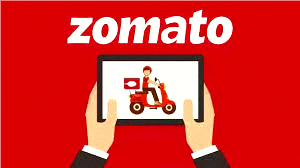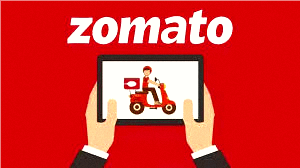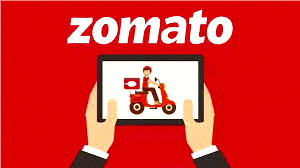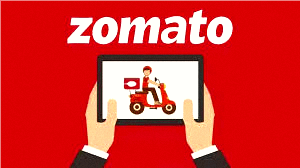Table of Contents

One of the leading Indian food delivery services, has established a powerful position within the international food tech industry. Starting off as a restaurant review service, now Zomato has done remarkable evolution in the food delivery business and as a result, Zomato’s shares have become a notable focus for many investors and analysts. In this paper, we will give a detailed overview of Zomato’s share price performance, the underlying fundamentals, their current position, and more importantly, the outlook on the company.
Introduction
In 2008, Deepinder Goyal and Pankaj Chaddah established Zomato in India. In the beginning, Zomato’s primary focus was on building a restaurant menu, capturing restaurant images, and gathering user reviews to aid in restaurant search. In the subsequent years after its inception, the company shifted to food delivery business and developed a system for ordering food online from local restaurants.
Zomato has already grown to be the biggest name in India thanks to their competition with delivery services like Swiggy and even competitors at the international level like Uber Eats, which has merged into Zomato’s direct competitor in India.
Zomato’s Initial Public Offering or IPO’s launch in July of 2021 was a landmark achievement for the company as a whole. The stock price has endured quite the journey since the company went public and has faced various bullish and bearish phases as well.
Market Factors Shaping the Growth of Share
- Market Sentiment and Competition
One of the primary determinants of Zomato’s share price is sentiment in the stock market. While dealing with any company that is publicly listed, people’s perceptions alongside general market conditions can pose a threat to Zomato’s share price stability. For instance, when discussing inflation, interest rates or a downturn in the economy, these global pervasive factors have been witnessed to directly alter the confidence of most investors in growth stocks like Zomato.
Aside from the previously stated factors, competition in the food delivery market plays an important factor as well. Swiggy is often regarded as Zomato’s biggest competitor and is expanding very fast while trying to capture a larger sector of the market. Zomato has had to adapt its plans in response to other competitors as well. This includes international brands such as Uber Eats making their way into the Indian market which puts pressure on Zomato and has a negative impact on their overall investor confidence and share price.
- Revenue Growth and Financials
The financial status of Zomato impacts its market share. Over the last few years, Zomato has experienced both revenue growth and revenue issues. The company’s investment in food delivery through the Zomato app alongside grocery deliveries using Zomato Blinkit has been a catch 22 situation. Revenue growth was strong, but profitability is and has been a challenge. Profitability and earnings reports are two aspects investors usually scrutinize. Poor financial results elsewhere typically results in poor stock performance.
Some of the more important operational measures such as revenue from operations, gross margin and EBITDA may either build investor trust or cause doubt. It is important to note Zomato has to change its strategies to enhance these metrics which is essential for proper evaluation towards stock price trends.
- Market Condition and Government Regulations
Like any other country, the food delivery business in India is regulated. Zomato has to adhere to laws on consumption, labor, delivery, and even taxation which impact the company’s cost structure. Also, shifts in government regulations on food safety, health, and gig economy legal frameworks that dictate how the workforce operates may affect stock performance for the company because they also affect operational costs.
Additionally, external factors such as crude oil cost (which affects delivery charges) as well as interruptions in the supply chain are other factors that can cause variations in Zomato’s stock price.
Share Price Performance Trends: A Closer Look at the History
- Initial Public Offering and Subsequent Price Changes
The Zomato IPO started on July 14, 2021. The issue price was set to ₹76-₹76. The stock performed well, surging 66% on the day of listing. This gave the company a market cap of ₹1.1 trillion. The Offering was oversubscribed because of huge recognition of the Zomato brand as well as the prospects of the Indian food delivery sector.
This was also the period where Zomato was stock volatile. Similar to other expanding technology business, Zomato’s stock experienced extreme fluctuations. Zomato’s stock price was unable to achieve any sort of stability and kept fluctuating. Factors such as market conditions, investor sentiment, as well as confidence in Zomato being able to turn a profit showed an immediate effect on Zomato’s stock price.
Major Developments and Share Price
- Some major ones are those Zomato share price impacted include:
The Blinkit Purchase: Zomato’s purchasing of the quick commerce platform Blinkit along with Grofers in 2022 was a giant leap for the company. The purchase meant an expansion Zipline’s business model beyond food delivery, which is to the quickly expanding grocery delivery market. This has however opened up concerns over Blinkit’s profitability, which Zomato has other financial targets to meet, and this has negatively affected share prices.
Zomato’s Quarterly Earnings Reports: Zomato’s financials have been mixed. Revenue figures have been good but the losses have continued as well. Negative earnings reports especially during the festive quarter have made investors sell off Zomato stocks.
Trends in Share Price Recently
There has been high volatility in Zomato’s stock price in the last year. The Company’s stock faced sell off in 2024 after the reported a 57% drop in net profit for the third quarter due to increased competition and costs associated with their Blinkit expansion.
Still, there is a split position among analysts. While some are optimistic owing to Zomato’s potential in the quick-commerce space, others are sceptical about its profitability. Zomato may prove to be key in the upcoming competitive market and operational hurdles during the fiscal 2025.
Key Analysts Commetns On Stock
A variety of analysts have put forward their views, each one differing from the next toward Zomato’s future.
UBS has assigned Zomato a “Buy” rating with a price target of ₹320 per share based on Zomato’s shift towards dark stores and increased delivery capacity.
Macquarie, for instance, has an ‘underperform’ rating with a target price of Rs 130 which points towards Blinkit’s struggle with profitability and the increases competition in food delivery services.
These discrepancies highlight the problem faced by investors when looking at growth stocks such as Zomato. The company is expanding itself and it is not yet clear if these efforts will turn into profits in the future.
Risks Affecting Share Price
Increased Competition Pigeon’s biggest hurdle is the competitive environment in the food delivery business. With rivals such as Swiggy getting a share of the market, as well as foreign businesses coming in, Zomato has to set itself apart while keeping customers coming back.
Profitability Challenges Despite steady revenue growth, Zomato’s struggles with profitability have put un upward presssure on its stock price. Investor’s worries focus on the company’s ability to monetize its large user base in a sustainable way.
Market Volatility Just like any tech stock, Zomato share price is exposed to wider market movements especially during the tempestuous post pandemic economy. Global economic factors such as the condition of the target region, interest rates, and inflation tend to shift the mood of investors.
What’s Next for: Future Prospects
Zomato is pushing forward with diversification as its strategic focus, with Blinkit spearheading the growth in the quick-commerce sector. With grocery and other necessities on-demand, Blinkit has considerable room for growth.
Aside from that, Zomato is set to continue expanding its business through acquisitions in the food tech sector, trying to add value to its portfolio. Because of the COVID pandemic recovery, increased consumer spending in India, may help the company’s development as well.

Conclusion: Is a Good Investment?
Still is among the heavyweights of the food tech space in India and as such its price reflects both its opportunity for growth and the difficulty ahead. Zomato is a tempting and dangerous company for potential investors at the same time. Whether or not it is a worthy investment is completely up to your risk appetite and faith in the firm to surmount these factors and become profitable.
With Zomato increasing its entrepreneurial appetite, the forthcoming quarters are very important as the company may either bounce back with stock increase or head into perpetual struggles.
The following document summarizes stock pricing as well as the market factors affecting it, and makes predictions about Zomato going forward. Investors should continue to monitor the nature of the market and Zomato’s financial results when they evaluate the share value.

If you are interested for more: “Bharat Mobility: Unlocking 5 Key Steps Towards a Bright Future of Integration in India’s Transportation Sphere” “Zomato Share Price: An Overview on Performance, Influencing Factors, and 2025 Share Price Prospects”











